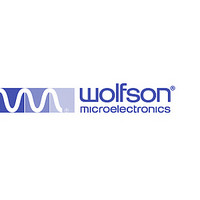WM8900LGEFK/RV Wolfson Microelectronics, WM8900LGEFK/RV Datasheet - Page 30

WM8900LGEFK/RV
Manufacturer Part Number
WM8900LGEFK/RV
Description
Audio CODECs Ultra Low Power Hi-Fi CODEC
Manufacturer
Wolfson Microelectronics
Datasheet
1.WM8900LGEFKRV.pdf
(117 pages)
Specifications of WM8900LGEFK/RV
Lead Free Status / RoHS Status
Lead free / RoHS Compliant
Available stocks
Company
Part Number
Manufacturer
Quantity
Price
Part Number:
WM8900LGEFK/RV
Manufacturer:
WOLFSON
Quantity:
20 000
WM8900
DEVICE DESCRIPTION
INTRODUCTION
INPUT SIGNAL PATH
w
The WM8900 is an ultra low power audio codec offering a combination of high quality audio,
advanced features, low power consumption and small package size. These characteristics make it
ideal for portable multimedia applications with stereo headphone outputs such as games consoles,
portable media players and multimedia phones.
Class G, Stereo ultra low power ground-referenced headphone drivers provide reduced power
consumption during DAC playback at typical listening levels, with user selectable low power modes
allowing a trade off between optimal audio performance and lowest power consumption .
A flexible input configuration includes support for two stereo microphone interfaces (single-ended
or pseudo-differential), additional stereo line inputs and auxiliary line input which can also be used
a common input ground connection. Up to three stereo analogue input sources are available,
removing the need for external analogue switches in many applications. Boost amplifiers are
available for additional gain on the microphone inputs and a programmable gain amplifier.
The stereo ADC and DAC are of hi-fi quality using a 24-bit, low-order oversampling architecture to
deliver optimum performance. A flexible clocking arrangement supports mixed ADC and DAC
sample rates.
The DAC output signal can be mixed with analogue input signals from the line inputs, auxiliary
input, mic boost stage or bypass paths. This mix is available on both headphone and line outputs.
The WM8900 has a configurable digital audio interface where ADC data can be read and digital
audio playback data fed to the DAC. It supports a number of audio data formats including I
Mode (a burst mode in which frame sync plus two data packed words are transmitted), MSB-First,
left justified and MSB-First, right justified, and can operate in master or slave modes. In PCM mode
A-law and µ-law companding is supported.
The SYSCLK (system clock) provides clocking for the ADCs, DACs, DSP core, integrated charge
pump and the digital audio interface. SYSCLK can be derived directly from the MCLK pin or via an
integrated FLL, providing flexibility to support a wide range of clocking schemes. All MCLK
frequencies typically used in portable systems are supported for sample rates between 8kHz and
48kHz. A flexible switching clock for the ultra low power ground-referenced headphone drivers
(synchronous with the audio DSP clocks for best performance) is also derived from SYSCLK.
To allow full software control over all its features, the WM8900 uses a 2 or 3 wire control interface.
It is fully compatible and an ideal partner for a wide range of industry standard microprocessors,
controllers and DSPs. Unused circuitry can be disabled via software to save power, while low
leakage currents extend standby and off time in portable battery-powered applications.
The WM8900 has three stereo analogue input channels which can be configured in many
combinations as line inputs, single-ended microphone or differential microphone connections. Line
inputs and microphone PGA outputs can be routed to the hi-fi ADCs or directly to the output mixers
via a bypass path. Multiple inputs can be connected simultaneously and mixed together or each
can be individually enabled or muted as required.
SINGLE-ENDED MICROPHONE INPUTS
In this configuration, the microphone signal is connected to LINPUT1 (RINPUT1), and the non-
inverting input of the input PGA is connected to Vmid. The Left (Right) channel input PGA and
boost PGA must both be enabled in this configuration. The gain of the input PGA and boost PGA
can be controlled via register settings, as described in Table 14 and Table 15.
In this configuration, LINPUT2 (RINPUT2) and LINPUT3 (RINPUT3) must not be connected to the
input PGA, but these connections are available for use as Line inputs directly to the input mixers.
Note that the input impedance at LINPUT1 (RINPUT1) changes with the input PGA gain setting, as
described under “Electrical Characteristics”. The input impedance can be determined for any gain
setting according to the following formula:
•
LINPUT1 (RINPUT1) only
PD, August 2008, Rev 4.0
Production Data
2
S, DSP
30













